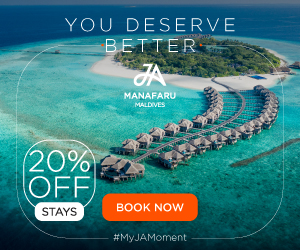The United Arab Emirates (UAE) is asserting its influence as a global tourism leader, marked by the historic election of Shaikha Al Nowais as the first female Secretary-General of the UN Tourism Organization. As the region garners international attention, data from Mabrian, the global travel intelligence company, sheds light on how the UAE is redefining the global tourism playbook through smart strategies, infrastructure investments, and a deep understanding of evolving traveler preferences.
According to the World Travel & Tourism Council (WTTC), travel and tourism contributed 13% to the UAE’s GDP in 2024, with a projected growth of 4% by the end of 2025. Thanks to a sustained, long-term strategy laid in the 1990s and early 2000s, the UAE has positioned itself as a world-class destination, experiencing consistent growth in international tourist arrivals, significant investments, and diversification efforts; and it continues to pursue strategies for sustainable expansion.
Insights into Action: The UAE’s Multi-Segment Tourism Strategy
“The UAE’s spectacular tourism development results from a clear roadmap combining a smart connectivity strategy—enhanced by low-cost carriers to serve specific segments and seasonal demand—with thoughtful product design, state-of-the-art infrastructure, and strategic use of unique advantages that are hard to replicate,” says Carlos Cendra, Partner and Director of Marketing and Communications at Mabrian. “Data suggests the next phase involves laser-focusing on opportunities arising from the UAE’s vision and its alignment with current market and consumer trends.”
1) Consolidating Western Europe and Boosting Asia: Strong air connectivity has been central to the GCC’s rise in global tourism, with the UAE leading the charge. Mabrian data shows international seat capacity has grown steadily since 2019, reaching a 14.5% increase in 2025. Western Europe remained the top source region in 2024, while Northeast and Southeast Asia recorded the highest year-over-year growth at 24%, as featured in the Connecting Travel Insights Report 2025.
2) Expanding Midscale Hotel Options to Broaden Market Reach: The UAE’s key hotel categories (3 to 5-star) are evenly distributed, and future development primarily leans toward upscale and luxury brands. However, expanding midscale offerings can further enrich the country’s lodging landscape. The scheduled openings of midscale lifestyle brands like Moxy Hotel and Mama Shelter—which resonate strongly with younger travelers—suggest that the UAE is actively working to broaden its appeal in this growing segment.
3) Concept Travel Itineraries: Showcasing Each Emirate’s Identity: A key driver of the UAE’s tourism success is leveraging the unique identity of each emirate to curate experiences tailored to travelers’ diverse interests, with culture, art, and heritage as central themes. Mabrian data shows culture as the top demand driver in Dubai (25.5%), Abu Dhabi (29.5%), Sharjah (33.8%), and Ras Al Khaimah (23.8%).
4) Building an Umbrella Brand for the UAE’s Tourism Offering: “An umbrella brand for marketing the UAE’s diverse experiences can help boost arrivals, extend the average stay beyond 4.45 days, and enhance satisfaction and loyalty,” says Mabrian expert.
5) Capitalising on Climate and Safety as Strategic Advantages: The UAE holds a significant competitive advantage due to its perceived high levels of safety and its exceptional, appealing climate. The exceptionally high Climate Perception Index (85.3/100) reflects the UAE’s reputation as a destination with favorable weather for much of the year, while the outstanding Perception of Security Index (94.8/100) is a key driver, indicating that travelers feel safe and confident.
As the UAE continues to position itself as a global tourism powerhouse, its strategic approach, data-driven insights, and commitment to innovation will be instrumental in sustaining its momentum and solidifying its place on the world stage.






